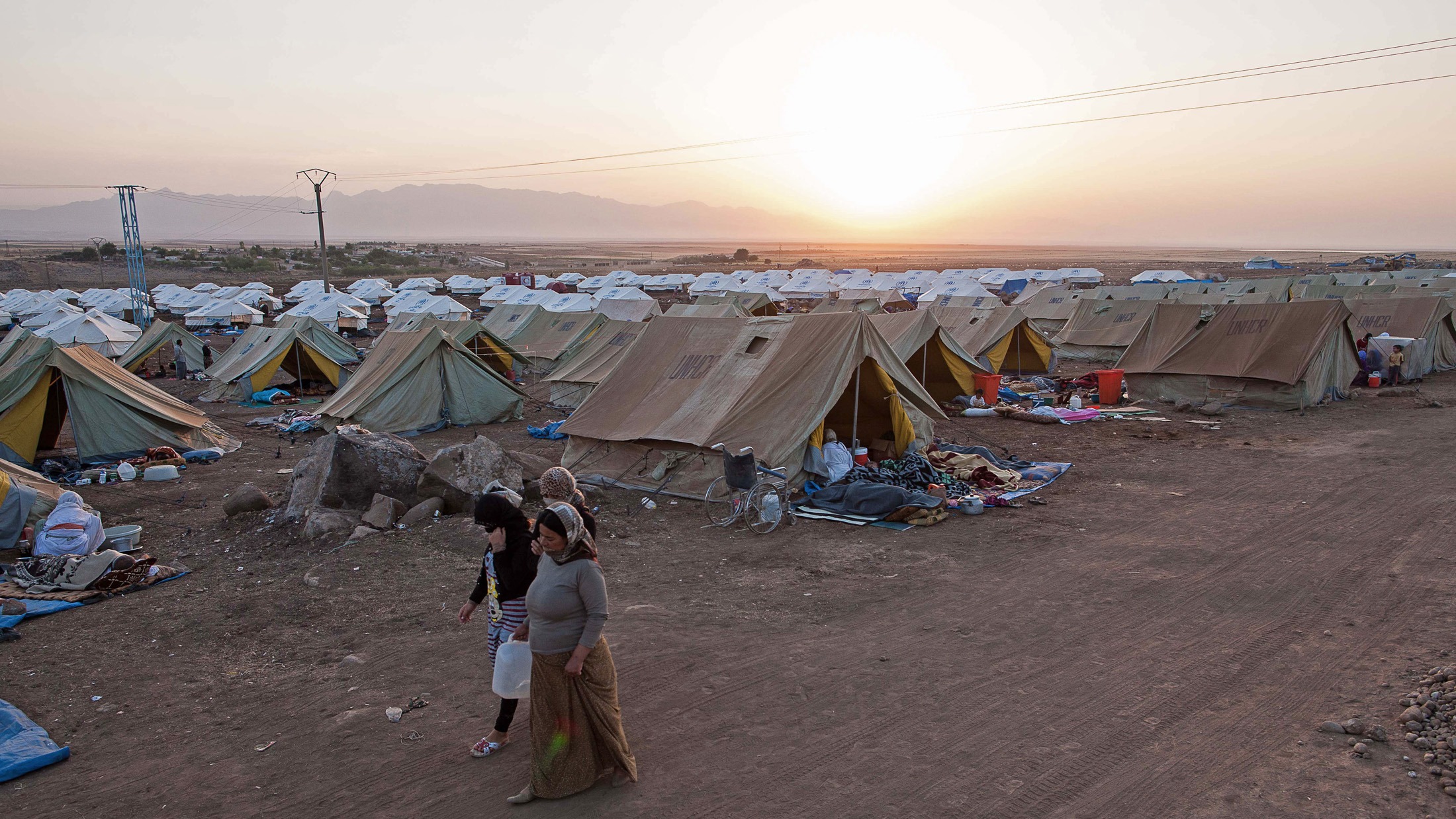IS’s brutal violence has pervaded the country’s multi-ethnic society, with everyone affected: Shia, Sunni, Yazidi, Christian; Arab, Kurd, Turkomen and Assyrian.
Valerie Amos, the UN under-secretary-general for humanitarian affairs and emergency relief coordinator, estimates that roughly 20 million Iraqis in total have been affected.
Semi-autonomous Iraqi Kurdistan has received more than 850,000 displaced civilians, the region’s relative stability quickly becoming a magnet for those forced to flee. Some left their homes in the middle of the night, as word spread of a mounting siege by IS.
“There is no returning to that place for my family,” a young Sunni man named Muhammed staying in a recently erected part of a camp near Peshkhabour, in Iraqi Kurdistan, says of his home in western Iraq. “There is death on all sides there.” Like Muhammed, few expect the dynamics to change soon.
While Kurdish and Iraqi forces have been bolstered recently by US airstrikes and growing international support in the form of lethal and non-lethal aid, IS has shown a resilience and determination many presume will persist for years to come.
“My Iraq has been tearing [itself apart] these last years,” says Ahmed, a displaced Iraqi near Peshkhabour, “but now I think it is ripped apart and I fear we will not be able to sew the pieces back together.”
mkc/jj/cb
This article was produced by IRIN News while it was part of the United Nations Office for the Coordination of Humanitarian Affairs. Please send queries on copyright or liability to the UN. For more information: https://shop.un.org/rights-permissions




